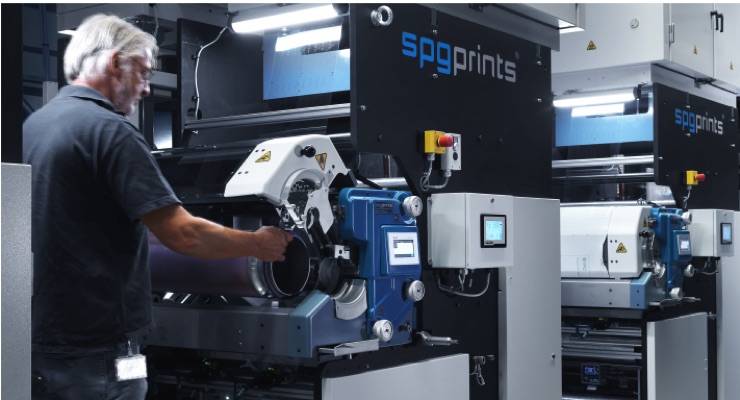SPGPrints' Printing Process Allows For Production of COVID-19 Rapid Test Devices
By Printed Electronics Now staff | 11.24.20
Millions of test strips are expected to be produced on both production lines.
Pharmaceutical companies are striving to make rapid test devices available to the public as soon as possible.
However, to do so, innovative techniques have to be used to meet the necessary medical requirements.
SPGPrints was asked to be involved in the development and delivery of several production lines to produce COVID-19 rapid test strips.
Millions of test strips are expected to be produced on both production lines, in which way SPGPrints contributes to a solution for the increased global demand for more test capacity.
"For over 30 years, biosensors are a quick tool for analyzing diseases, using just a strip and body fluids. A common application of biosensors in the medical industry is the glucose test strips for diabetes patients. They use these strips to test if their blood sugar levels are deviating from normal. To provide the patient with quick test results, the blood is dripped on a test strip which is then examined by a diagnostic test device. Within minutes, the patient can see what their exact levels are," said Hank Guitjens, commercial manager Label & Industrial printing at SPGPrints. "These biosensor test strips contain an advanced piece of technology. The film used for the test strips must be printed in such a way that it can absorb the body fluid and provide the optimal conditions for this reagent to react with the body fluid. SPGPrints specializes in and holds the correct innovative technique to print the film with the level of precision that is required for these test strips."
SPGPrints was invited by an international pharmaceutical company to be involved in the production of COVID-19 rapid test strips.
The goal was to produce a diagnostic test system that — with the use of a patient’s saliva — could quickly indicate if a patient was COVID-19 positive or not.
In this international cooperation, it was up to SPGPrints to develop a process for printing on film.
In the printing process, high levels of accuracy were crucial since the newly developed chemical reagent could only function properly under optimal conditions.
Within less than a year, SPGPrints managed to develop, produce and deliver a custom-made system for their pharmaceutical partner.
Despite it being a new, custom-made system, the startup phase was very successful, and a yield was achieved above expectation within weeks.
On top of that, newly hired operators needed limited training due to the user-friendliness of the system, which means the partner could start producing directly.
This enabled the pharmaceutical partner to reach their ideal production levels within weeks after the new system had been delivered.
Rotary screen printing provides users with several advantages over other screen-printing techniques. It provides great accuracy, high-quality levels and helps users to increase their productivity.
But most importantly, it enables users to quickly scale up their printing process.
For that reason, some users start out with flatbed printing but switch to rotary screen printing once their product has to be produced on a greater scale.
Besides biosensors, SPGPrints uses its rotary screen-printing techniques for the creation of – amongst others – printed electronics, flexible solar cells, RFID tags and printed batteries.













